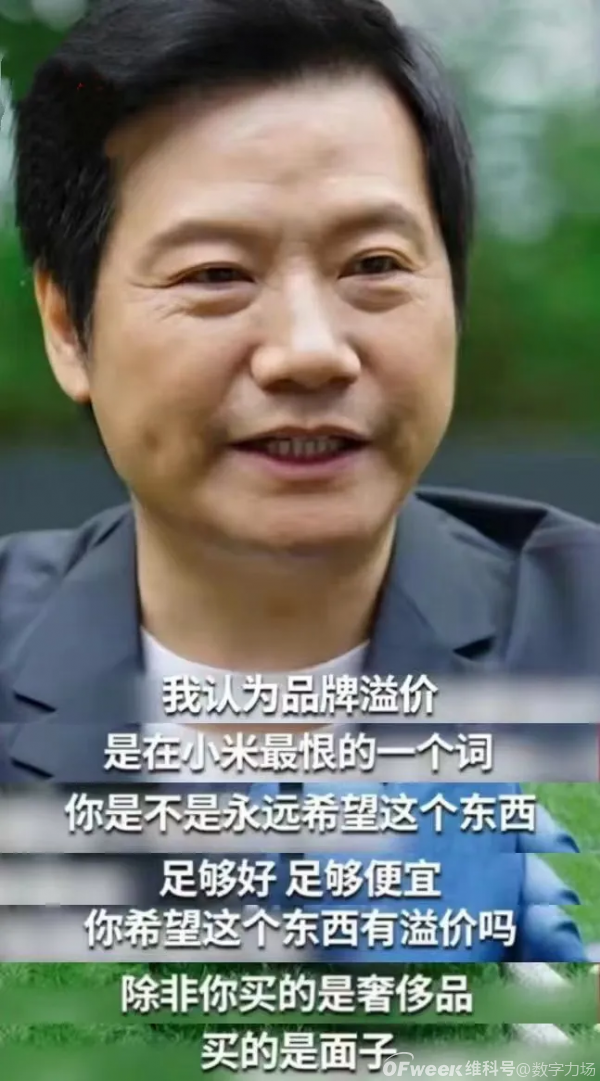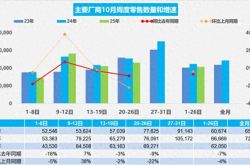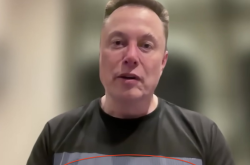Low Prices Have Original Sin? Lei Jun Would Be Smiling
![]() 07/12 2024
07/12 2024
![]() 692
692

By | She Zongming
The end of e-commerce competition is not about price wars, but price wars are inevitable in e-commerce competition. This is not a comment from "General MacArthur," but my judgment.
Those who offer low prices may not necessarily win the world, but the products and services that "win the world" often have good quality and cost-effectiveness. This is not what Lu Xun said, but a reality.
These statements are not without purpose: In the context of public opinion's "anti-involution" arrows aimed at the mantra of "rather die from exhaustion than let others win," the issue of "price wars" has also been pushed into the firing line by some people.
"XX, trapped in low prices" "Low prices are destroying the entire e-commerce ecosystem"... Such sayings crop up from time to time online. Coupled with cases like "a merchant in Yiwu with an annual turnover of 200 million yuan and a profit of only 550,000 yuan," many netizens' sympathy for merchants easily extends to lashing out at the "original sin" of low prices.

▲The phenomenon of "price wars" is indeed quite common.
After the competition on cost-effectiveness is labeled as "involution," within the context of platforms often being seen as the "system" in popular narratives of being "trapped," criticism of low prices easily hits the public's fatigue with "involution" and anti-capital sentiment.
The question arises: Who ultimately decides the price? Does a single platform really have the power to force merchants to lower prices? At this stage, does e-commerce have room to compete without relying on price power?
The answers to these questions may be hidden in the words of the renowned economist Zhang Weiying – the essence of market economy is consumer sovereignty, and consumers are the true "bosses."
01
Today, if anyone still believes that merchants' focus on cost-effectiveness is merely an "accidental development in history," they are quite naive.
The reality speaks for itself: Almost no industry in China does not compete on price.
The e-commerce industry is competing. Liu Qiangdong emphasizes that "low price is JD.com's only basic weapon," Wu Yongming says that "price power is the core strategy across all levels of (Alibaba) products," and Douyin E-commerce has set price power as its top priority task for 2024.
AI large models are competing. In May this year, ByteDance, Alibaba Cloud, Baidu Intelligent Cloud, iFLYTEK, Tencent Cloud, and others reduced the prices of their flagship large model products, with many being offered for free, causing "chaos in the northwest of Shanxi Province."
Even the coffee industry is competing. If you can start at 9.9 yuan, I can start at 8.8 yuan; if you can offer coupons, I can invite new users to drink coffee for 1 yuan... Drinking coffee on a 3,000 yuan monthly income doesn't seem so out of place anymore.
The rivalry between Hema and Sam's Club, Luckin Coffee and Kudy, revolves around the word "price."
So, does a single platform determine low prices? Is price competition solely driven by the "will" of a particular platform?
Obviously not. The issue of price is essentially a market issue. Given sufficient supply, it is only consumer demand and purchasing power fundamentals that determine overall price levels.
If consumers' purchasing power is strong, merchants can sell their goods and services at a premium without worry, and it may not be useful for platforms to force merchants to lower prices – merchants can simply vote with their feet and sell on another platform. If purchasing power is weak, even if platforms want merchants to sell at higher prices, merchants dare not.
Therefore, understanding price logic cannot be separated from user-oriented thinking. As social consumption shifts left or right, the prices of goods and services tend to follow suit.
As for what determines where people's consumption shifts... That's beyond the scope of this article, so let's omit 1000 words here.
To put it bluntly, while it is natural for merchants to hope to sell not at low prices but at high premiums, the prerequisite for such a leap is that consumers' incomes can rise.
02
Generally speaking, consumption presents a hierarchical structure, and platforms and merchants, as nodes in the social consumption supply network, strive to meet the multi-level consumption needs of different groups or the same individual in different scenarios. However, the previous "pyramid tip-middle-base" hierarchy is being restructured by the macroeconomic situation of slowing consumer spending.
When phrases like "it's not that xx can't afford it, but that xx offers better value for money" and "you can buy expensive things, but not at exorbitant prices" become the catchphrases of this generation of netizens, and when more and more money-saving groups appear on Douban, with many young people undergoing a transformation from "questioning, understanding, to becoming" their parents' money-saving habits, platforms and merchants are not naive.
Becoming more cost-effective has become a common choice across industries.
Price wars, when labeled with the word "involution," can indeed elicit反感, but it is actually a neutral term, merely reflecting market competition.
In fact, many people, when putting themselves in the role of merchants, naturally hope to raise profits, but when acting as consumers, they hope to lower prices – hating "price wars" but loving high cost-effectiveness. Saying "stop the involution" while secretly hoping for lower prices, this mixed reaction marks the truest human nature.
Lei Jun understands this well. In a previous interview, he said that brand premium is the word Xiaomi hates most. In his view, consumers always want goods that are good and affordable – unless they're buying luxury goods, where they're buying status.

▲Lei Jun once said that brand premium is the word Xiaomi hates most.
Xiaomi's product pricing also reflects its emphasis on high cost-effectiveness: Xiaomi phones sell at the price of Huaqiangbei phones but with the quality of branded phones, and the Xiaomi SUV7 standard edition, after deducting gifts, costs exactly 199,900 yuan, earning jokes from Xiaomi fans that "Lei Jun still has us in mind."
Liking affordability is human nature, especially when more and more people's wallets cannot afford high premiums.
Abandoning the "pentagon-centric perspective," we find that, in terms of consumer demographics, the pyramid tip has always been the minority, while the base represents the fundamental market.
For this reason, Harvard Business School professor M. Michael regards "low cost, low margin, low price" as the business strategy during the introductory stage of the retail wheel theory.
Combining retail data from the past two years, we can see that as "tightening one's belt" has become a consensus among many people, the base segment continues to expand.
As a result, more and more merchants' pricing strategies are aligning with affordability standards. After all, affordability is a rigid and urgent need for consumers.
03
It is worth noting that many people are accustomed to opposing affordability and quality, assuming that low prices equal low quality.
In reality, there are indeed merchants who sacrifice quality to offer low prices, and there are also consumers who only look at price when buying things and ignore quality.
But don't underestimate the economic rationality of various market participants, even if they are not always rational.
As someone said, consumers are always seeking the optimal combination of price and quality, and good quality at a low price is an eternal pursuit. Demanding both quality and affordability is today's most obvious consumption trend.
Children have to choose between good quality and low price, but adults want both. While the priority order may change, most people would choose the more durable and comfortable pair of Crocs between the 10-yuan ones that can't last two weeks and the 18-yuan ones that can last for years. Hence, concepts like "quality-to-price ratio" and "heart-to-price ratio" are frequently mentioned today.
"Fast, good, and cheap," many consumers may prioritize "cheap," but they won't sacrifice "good" for "cheap."
The market cannot escape the law of "regression to the mean." Product prices may fluctuate, but they will ultimately return to a balance that ensures both merchants' profitability and consumers' benefits.
With the supply pendulum swinging to the "excess" side, sleeping on high premiums and earning easy money is a thing of the past.
High premiums are actually a form of "economic rent" that accompanies monopoly dividends or competitive advantages, and they will be diluted and broken by the diversification and enrichment of supply brought about by full competition. With full competition but no core barriers, if you sell at a higher price than others, others can defeat you with reliable quality but lower prices.
Consumers will vote with their "purchase buttons."
You can say it's cruel from the merchant's perspective, but it's reasonable from the consumer's perspective.
04
Some people may ask: Is it really possible to have both good quality and low prices?
The logical support chain for some people's belief that "low price equals low quality" is: merchants lower prices – profit margins shrink – cost control intensifies – production corners are cut – quality declines.
In the traditional production and sales model, where there are many middlemen between production and sales, this makes sense: If the final sales price cannot cover the upfront production costs with a significant markup, manufacturers and merchants will essentially incur losses.
However, business model innovations centered on supply chain reconstruction make it possible for "long-term price power" based on efficiency improvements and cost reductions to pierce the impossible triangle of "low price – high quality – sustainability."
Further, after "redoing" the supply chain, affordability no longer needs to be traded off for cutting corners but can be achieved through full-chain digitization, eliminating middlemen, and gaining economies of scale.
In this regard, Costco, the benchmark for membership-based supermarkets, and Coca-Cola, the king of beverages, are typical examples.
Costco's ability to offer both quality and affordability stems from its globally integrated supply chain. While other supermarkets still rely on the multi-tiered pricing model of key account (KA) sourcing, Costco uses large-scale direct sourcing and supply globally to ensure "ultra-high quality-to-price ratios."
Coca-Cola is the same. Over the years, it has been able to resist inflation and maintain stable prices due to its strong scaling capabilities and supply chain capabilities – its vast global production network allows it to control costs to the extreme.
Many people buying Tesla or BYD are also closely tied to cost-effectiveness: Both Tesla and BYD rely on in-house technology stacks and large-scale component procurement to reduce costs. Not long ago, a BYD official said that not lowering product prices despite falling raw material costs is immoral to consumers.

▲Li Yunfei, a senior executive at BYD, said that when battery raw material prices soared, new energy vehicles followed suit, but when battery raw material prices plummeted in the past two years, not lowering prices was immoral to consumers.
In a nutshell: If you can lower costs based on your own capabilities, why not pass on the savings to consumers?
Pinduoduo, which has been in the spotlight frequently in recent years, is also similar. Too many people only see its high cost-effectiveness but fail to see the support behind it from the new model and technology of "decentralized e-commerce" – whether it's C2M (consumer-to-manufacturer), the ultra-short chain model of "from farm to table" based on "grouped agricultural products," flexible supply chains, small-order quick response, or tapping into "industrial clusters" to reduce merchants' channel operating costs, all provide leverage for users to buy good products at low prices.
These are Pinduoduo's core competitive advantages. However, obscured by the strong mental anchor of "9.9 yuan free shipping," many people have reduced its core advantages to mere "cost-effectiveness" rather than the cost reduction and efficiency enhancement effects brought about by its leading model.
05
In his book "The Paradox of Prosperity," renowned columnist Tyler Cowen proposed the concept of "disruptive innovation" – disruptive innovation involves making complex and expensive products more affordable and accessible, enabling more people to afford and use them, thereby opening up new markets.
In his view, Mo Ibrahim's Celtel company transformed extremely expensive solutions in the mobile communications sector into simple and affordable ones, driving the popularization of proprietary products and services, thereby winning itself millions of new users. This is disruptive innovation.
This is similar to what Huang Zheng said years ago: "It's not about making Shanghainese live like Parisians, but about making people in Anqing, Anhui, have access to kitchen paper and good fruits."
Essentially, making previously expensive products and services more affordable for more people is also "disruptive innovation" – which often relies on innovation in product technology and service models.
Those who say "merchants are trapped in low prices" may have a misunderstanding of low prices.
It's easy to criticize low prices, but one must follow market logic and see the deeper logic behind low prices: Affordability has always been a consumer demand, and it is even more so now; the inherent conflict between affordability and quality can be avoided through technological and modal improvements (such as the C2M model and flexible supply chains), making it possible to have both good quality and low prices...
Therefore, I don't believe that low prices are the end of e-commerce competition, but I do believe that cost-effectiveness is inevitable in e-commerce competition, and that emphasizing cost-effectiveness is not a makeshift solution but a normal practice for e-commerce, because market economy is consumer sovereignty economy, and e-commerce economy even more so.
You can design prices based on "planned thinking," but that will ultimately be unsustainable.
You can criticize low prices from a high moral ground, but you cannot deny that it is the market that chooses low prices.








